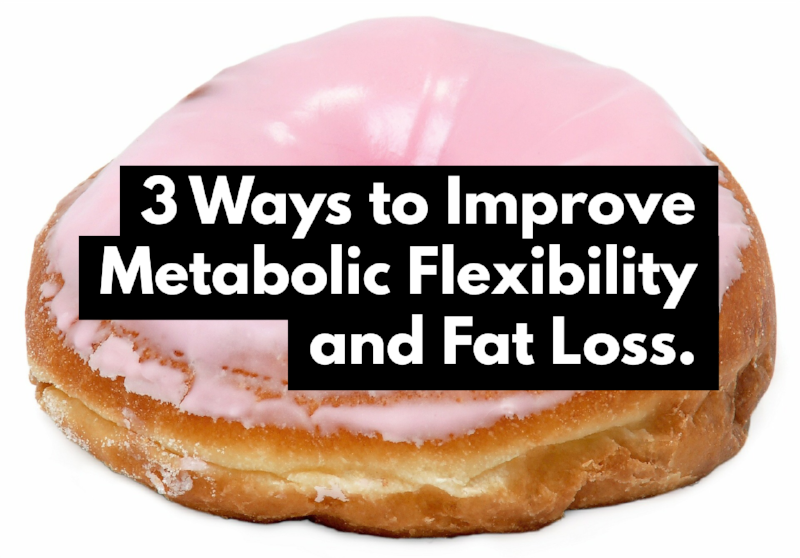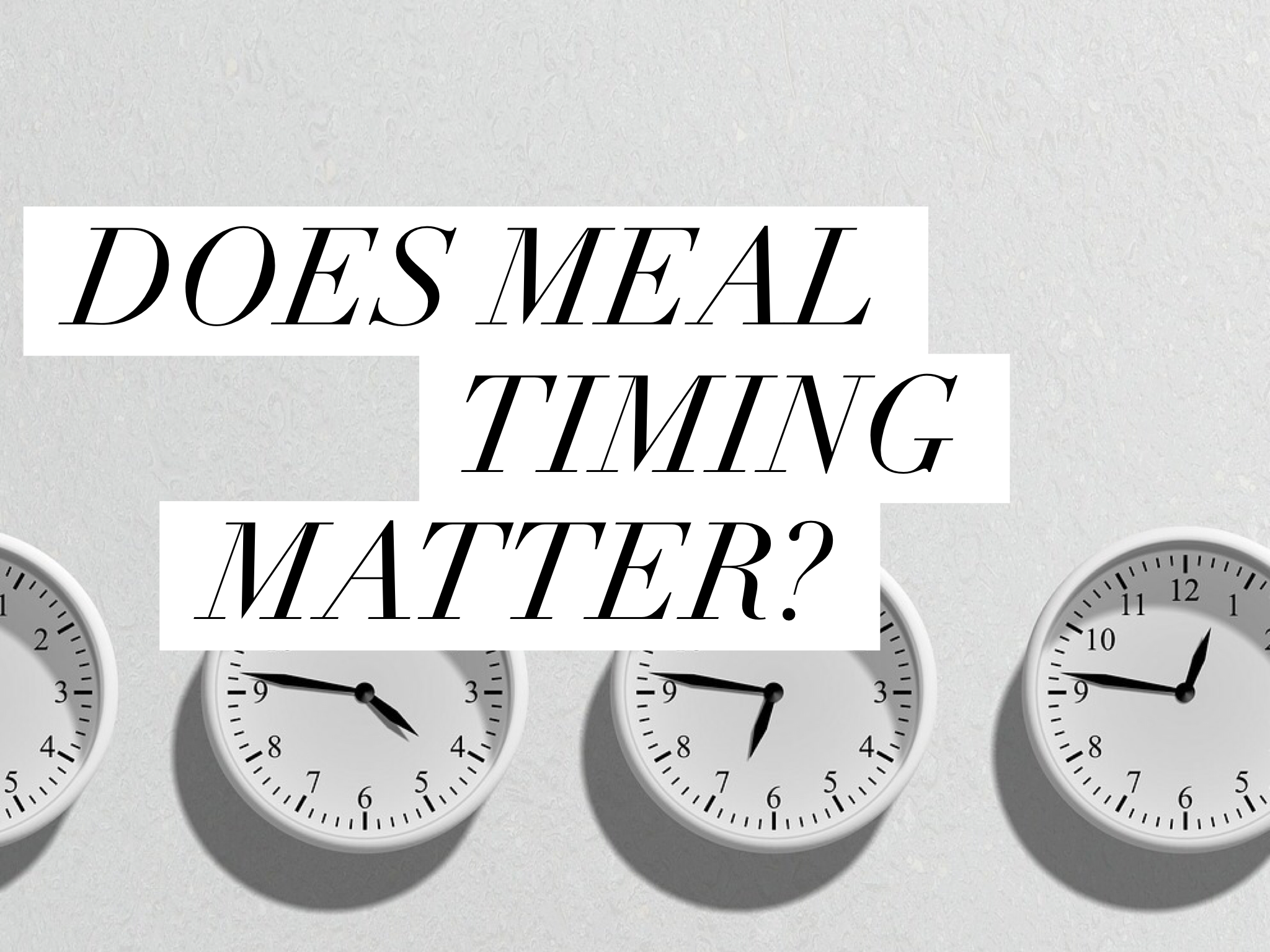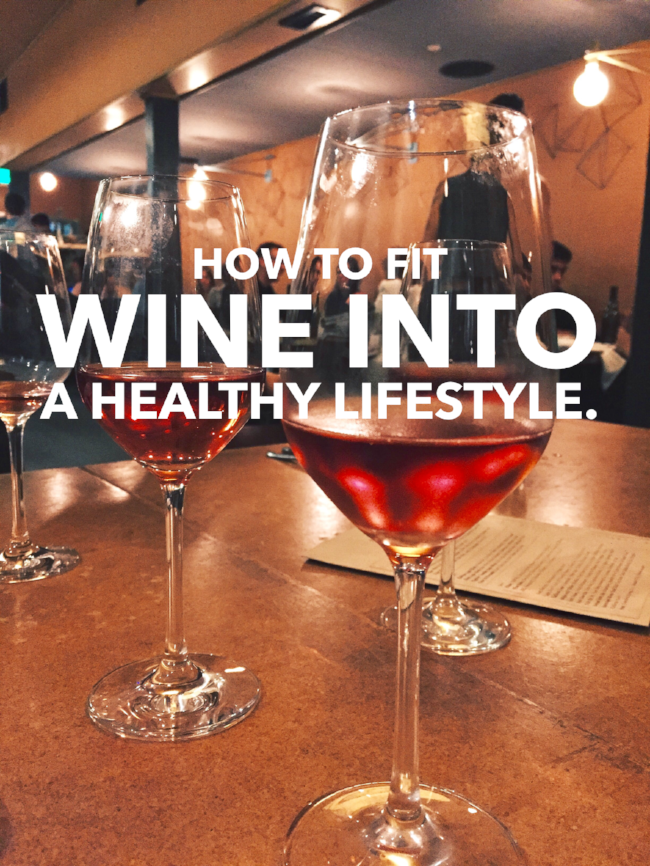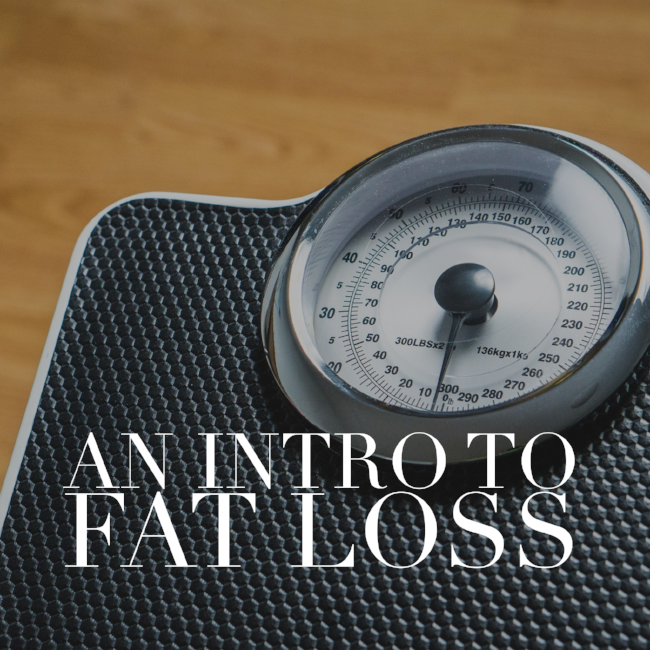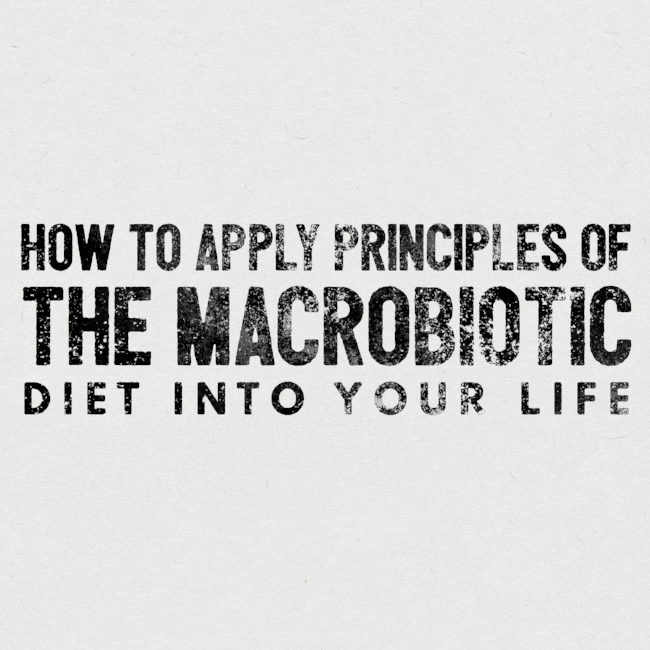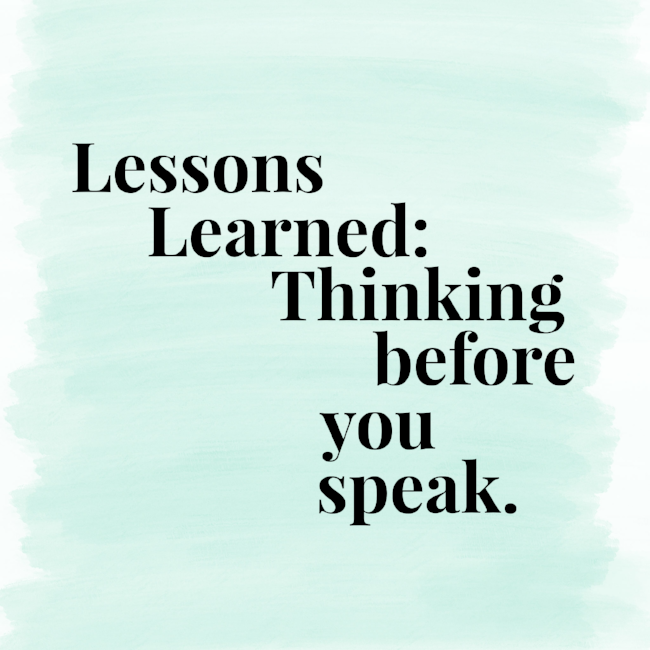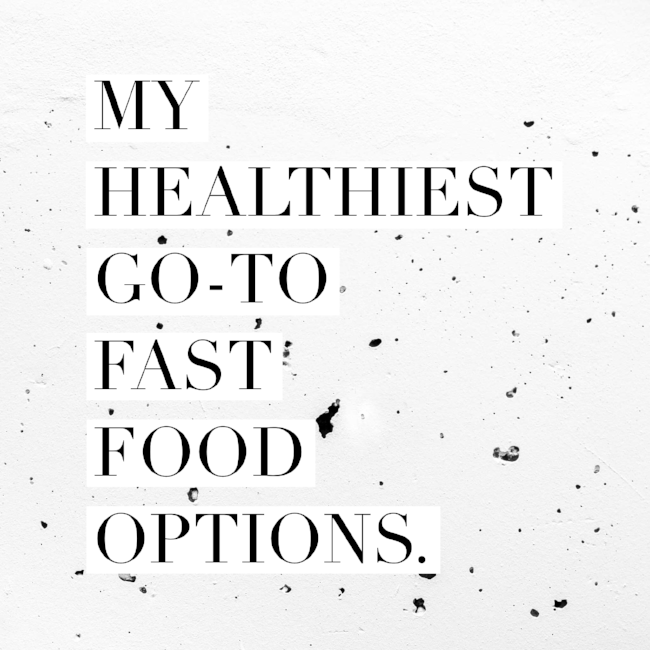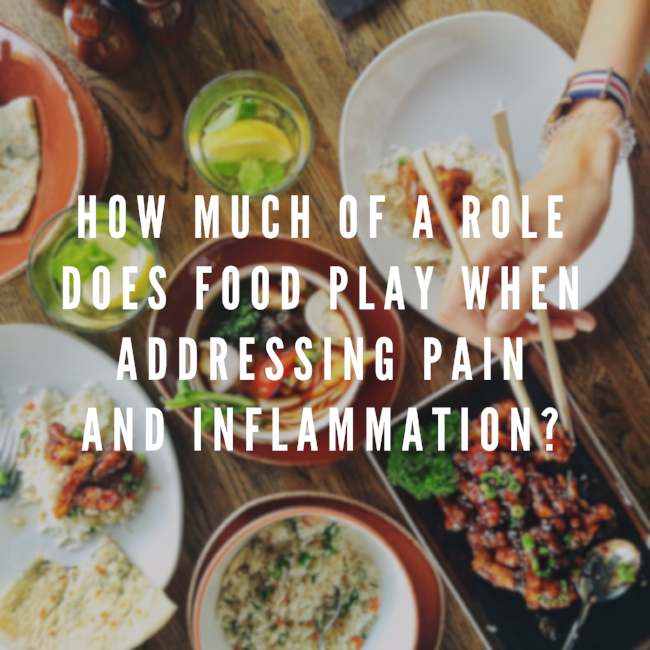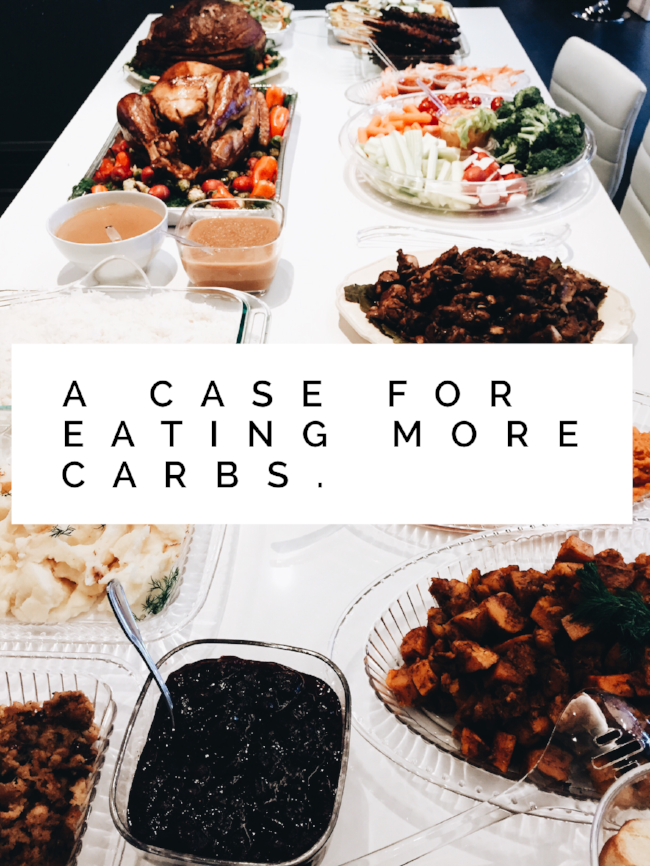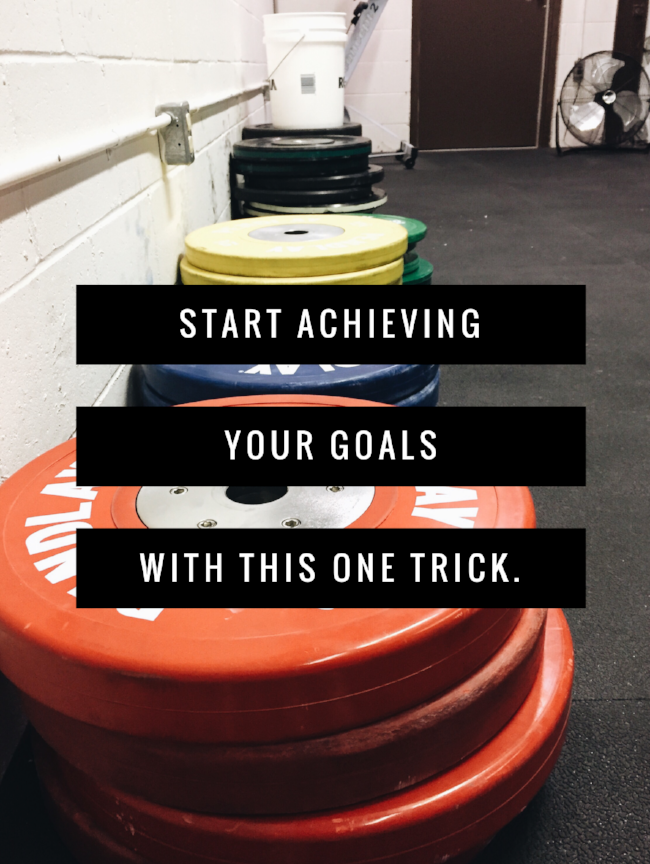The benefits of Insulin and Fasted Cardio for fat loss .
If nutrition is your hobby or you’re simply trying to navigate how to approach your own personal nutrition plan, then you’ve probably noticed a lot of negativity in the nutrition space surrounding what is correct and incorrect.
There’s a huge movement surrounding evidence based nutrition which I think is great because it clears up a lot of false claims that are leading people down the wrong path, but it’s also becoming something that is preventing people from doing a lot of things as well.
Let me explain.
Recently I came across a post from a high profiled nutrition coach that said insulin isn’t as big of a factor in weight gain as long as calories are equated. While I do agree with this, I won’t go as far as telling people that balancing insulin throughout the day isn’t necessary.
In my mind, “balancing” insulin or keeping blood sugar controlled throughout the day is something people can understand in their head to maintain or lose weight.
The thing is, some people don’t like looking at food strictly from a caloric deficit and caloric surplus. Some people don’t like numbers and studies. Some people simply want to say, “if I eat this donut, insulin will spike and therefore it will contribute to me gaining weight”.
Yes, they can eat half the donut (or whatever their macros allow), but if they want to lose weight and approach it by visualizing insulin spiking then this may be their method of losing weight.
In the long run, I think it's important for people to understand that insulin does not cause weight gain to the extent that a lot of people make it, but in the short term, if “balancing insulin” is the way they choose to approach weight loss then so be it.
Another example of this is the idea of fasted cardio not being as effective as simply balancing out calories. Studies will show that fasted cardio is not more effective as regular implemented cardio. However, this doesn’t take into consideration the idea that fasted cardio has worked well for many people and continues to do so.
So my question is, are we going to mock or stop people from doing fasted cardio simply because the research says cardio is just effective whether your fasted or not?
P.S while writing this post, I did come across a study that concluded that what you eat alters the response of adipose tissue to exercise. You can find the study here.
The message I’m trying to get out in this blog post is that research serves a purpose in giving you more clarity to make the best decision for yourself and in the long run, but you shouldn’t be limited to what is written on paper. If something works for you and is done safely, then continue to do it.
I do believe that calories are an important measure of fat loss, but using things like balanced insulin and fasted cardio can be indirect ways of achieving a caloric deficit.
Studies:
https://www.physiology.org/doi/full/10.1152/ajpendo.00006.2017
Strange Love Coffee // U of T Vlog.
I’ve been low key lately, but believe Im busy visiting coffee shops and wandering the city.
Follow me: Instagram: https://www.instagram.com/liveitholistic
Facebook: https://www.facebook.com/liveitholistic/
Twitter: @liveitholistic
Blog: http://www.liveitholistic.com/
Music: // https://www.instagram.com/toreii_/
Dealing with Food Cravings.
Instagram and food shows have made it harder to lose weight. I can’t even count how many times I’ve come across a video on YouTube teaching you how to make cookies and cream donuts only to find myself at the grocery store 20 minutes later looking for something similar to what I just saw.
The thing about all of this variety and access to tasty foods is that they aren’t necessarily the healthiest at times. Yes, I understand that a little bit of balance will allow us to enjoy our Pasta and Ice Cream while maintaining optimal health, but that’s easier said than done.
I always roll my eyes at people who talk about food strictly from a numbers standpoint and disregard the cravings aspect of it. I know I can have 5 cookies and stay within 50g of carbs, but what if its hard for me to only eat 5 cookies? What if I want more? What will numbers do for me then?
With that being said, here are my 3 tips to help you deal with food cravings.
1. Create a set of rules that qualify you to eat something high in sugar. For example, I always tell clients to have your dessert match your activity level. Plan on meeting a friend for ice cream and waffles? Then plan to workout before going out.
2. Distract yourself. In some cases, your going to simply eat whatever you have your mind set on. In most cases, cravings are another way of your body saying its bored. Have a random craving for mango sticky rice 2 hours after dinner? Go out for a walk at the mall, call a friend to chat or even better, go to the gym. Placing your focus on something else cuts the edge of the anticipation of something sweet.
3. Understand that you can eat whatever you want, but you have a choice to decide what you eat. Framing foods this way will take power away from cheesecake. I have this idea that if Louis Vuitton purses were sold for $35 at Ross then the hype of having one would go away. This same thought process happens with food. The more you say you can’t eat it, the more you want to eat it.
And those are my 3 tips on dealing with cravings. Remember, food shouldn’t simply be looked at as bad and good, but instead over consumed and under-consumed.
Tips for Improved Sleep and Recovery
Sleep:
Here I’ll share with you some tips to improve sleep quality and regulate your circadian rhythm. For anyone unaware, our circadian rhythm is our body’s physiological clock that determines when we should sleep and wake up. Regulating our circadian rhythm is important to us as it serves as a modulator of regeneration and hormone secretion.
In a clinical setting, sufficient sleep falls between 8-9 hours. I know some of you may be reading this and you’re probably rolling your eyes, as your lifestyle may or may not accommodate 8-9 hours of sleep. At the very least, studies have shown that getting less than 6 hours of sleep increases your risk of metabolic syndrome. Here are some tips to improve your sleep quality:
1. Carbs at night: Consuming carbohydrates at night are beneficial because of its effects on blood sugar and its ability to release melatonin. By consuming carbs at night we prevent blood sugar and insulin from dipping and cortisol from rising. Preventing this is optimal because when blood sugar dips too low while we sleep, cortisol (a stress hormone) is released and tells the body to release its own blood sugar, which can cause a disruption in sleep and in turn, increases fat.
2. Magnesium: The one and only supplement that I recommend without a doubt is a good magnesium supplement. Magnesium functions as a natural muscle relaxant that works on the central nervous system. Magnesium supplementation also relaxes the smooth muscles of the digestive system, which promotes regular bowel movements. Deficient individuals may get a calming effect when they supplement with magnesium.
3. Electronic detox: The electronic detox is pretty much what it sounds like. I’ll always recommend that we limit as much blue light that emits from computer screens before bed as much as possible. The reason for this? It’s because blue light signals the brain to down regulate melatonin production. You’ve most likely heard of melatonin as being the body’s sleep hormone. When we mess with melatonin, we disrupt our circadian rhythm (biological clock). When blue light hits our eyes, it tells the body to wake up which leads to disrupted sleep cycles. Traditionally we are exposed to less light as the sun goes down. Of course, with the emergence of smartphones, laptops and iPads we’re constantly exposing ourselves to artificial light.
4. Blue Blocking Glasses: This may be extreme to some but if your job requires you to spend a lot of time in front of a computer screen, then our next best thing is to limit blue light by enlisting the help of tools such as blue blocking glasses. As I’ve mentioned in my last point, our bodies should be in line with when the sun rises and when the sun goes down. Investing in a pair of blue blocking glasses may be a small hack to get our bodies to wind down as the evening approaches.
5. Cool/Clean Room: The idea of cleaning your room is more of a lifestyle hack. The premise is that if you clear your surrounding environment, then you’ll also clear your mind. Most people who have trouble getting to sleep have things running through their mind and never give themselves a chance to relax. Clear your room and clear your mind!
Recovery:
1. Massage Therapy: Massage therapy has positive effects on pain management, immune function and overall mood. A preliminary study done at Cedars Sinai Medical Center in Los Angeles took blood samples before and after massage therapy and found that 45 minutes of massage therapy had a positive effect on reducing inflammatory markers leading them to believe that immune function was enhanced by the massage. Soft tissue work promotes circulation, which improves overall recovery time by circulating nutrients to the worked muscles. I recommend going as a preventative and recovery measure and not simply going when injured.
Here’s how I do it: Frequency is up to you (and your insurance coverage). The one thing I make sure of is that I go after I’ve worked out and never before I’m about to do something active. Massage therapy can put you in an extremely relaxed state and may inhibit your coordination and reaction speed. My recommendation is to do it on a rest day.
2. Epsom Salt Bath: Remember all the wonderful benefits of magnesium I talked about earlier in the supplementation section? Well, you can also increase your magnesium intake by taking a warm bath in Epsom salt. Epsom salt is basically sulphate and magnesium. Take all the added benefits of magnesium such as restoring electrolyte balance, calming the nervous system and increasing sleep quality and add the benefits of hot water on joint health and you have your reason to soak in Epsom salts. You can find Epsom salts at most pharmacies or grocery stores. Please note that while it is called Epsom salt, it is nowhere close to regular table salt (so don’t try to bio-hack anything here).
Here’s how I do it: Add 2-3 cups of Epsom Salt into a warm bath. Have a large glass of water nearby and relax for 15 minutes or until you start to feel dizzy. You can go in and out when you start to feel overheated.
3. Contrast Showers: Contrast showers have been something I’ve utilized from time to time after my workouts. The premise is that going from hot to cold causes increased blood flow to the tissues. This allows the body to recover faster by increasing circulation and oxygenated blood to the whole body. Hot water vasodilation (widening of the blood vessels) while cold water causes vasoconstriction (narrowing of the blood vessels). This causes a pumping action of the blood vessels.
Here’s how I do it: I’ll usually shower first and foremost with soap and get the shampooing and washing out of the way. Once that’s out of the way I’ll turn the water to an extremely cold temperature for 1 minute, then switch it back to hot water for another minute making sure to target areas of the body with blood flow. Ill do this about 5 – 8 times.
4. Infrared Sauna: Studies have shown numerous benefits to sauna use as a therapeutic tool. Most studies have supported cardiovascular benefits when it comes to individuals with hypertension but did you know that it also has beneficial effects on strength and performance? A Finnish study was conducted at the University of Jyvaskyla found that when infrared heat enters 3-4 cm into fat tissue; it has a positive effect on recovery from maximal endurance performance. Although more research is needed to prove this, infrared saunas have a positive effect on detoxifying the body as well.
Studies:
Infrared on performance:
https://www.ncbi.nlm.nih.gov/pmc/articles/PMC4493260/
Massage Therapy and its positive effect on Immune system:
https://www.ncbi.nlm.nih.gov/pubmed/20809811
How to Properly Prepare and Eat at a Buffet
I’m a lover of the buffet. What’s not to love? Firstly, you’re taking away the stress of ordering the wrong meal or not having enough of a good one. I know with quantity, the quality can go down, but when you find the right balance between quantity and quality, it’s a beautiful thing.
I’m a lover of the buffet. What’s not to love? Firstly, you’re taking away the stress of ordering the wrong meal or not having enough of a good one. I know with quantity, the quality can go down, but when you find the right balance between quantity and quality, it’s a beautiful thing. Don’t believe that balance exists? Go to Vegas and try the buffet in Caesars Palace. It’s like Disneyworld for foodies. Now that I’ve professed my love for All You Can Eat Buffets, let me show you how to eat at one without taking a hit on the scale.
The important thing to remember about eating at a buffet is that preparation begins before even getting to the restaurant. In fact, it starts in the morning.
Here are 5 steps to follow before eating at a buffet.
Step 1: Start the day with lemon water in the morning and use the washroom. Not only is it a good practice to implement on a daily basis, but it also gives you a chance to make room (without getting too technical).
Step 2: Backload all your carbs until you get to the buffet. If you’re counting calories and macros, then this will be easy as you’ll be able to know how many carbs you’re actually allowed to eat. Saving all those carbs like money until we get to the buffet is an easy way to prevent you from overeating too much. Prioritize fibre from veggies and moderate protein until the buffet opens.
Step 3: Plan to workout before going to the buffet (I suggest leaving a 1 hour gap between finishing your workout and actually eating at the buffet). This is all in the name of insulin sensitivity. In the post-workout window, the body is more receptive to carbs (which I assume we’ll be having more than our usual in that one meal).
Step 4: Prioritize protein at the buffet. Let’s be real, you paid a lot to get into the buffet, DO NOT waste your money on pizza, fries and noodles. Those foods are ok in moderation, but 70% of the food you end up eating should be protein and the foods you don’t necessarily have regularly at home. For me, those things include crab legs and seafood.
Step 5: More plates. Smaller portions. When you do go up for food, don’t over commit to one plate. The beauty in the buffet is variety. Try everything in small amounts. Not only will you enjoy your food more, but you’ll be more mindful of what you eat.
That’s it. That’s my simple method for preparing yourself for a feast. These rules not only apply to buffets, but any meal or occasion that’s bound to be high in calories.
See you at the buffet!
3 Ways to Improve Metabolic Flexibility and Fat Loss
Lately the term “Metabolic Flexibility” has been thrown around a lot lately. To keep things simple, “metabolic flexibility refers to the body’s ability to efficiently switch from one fuel source to another. To me, metabolic flexibility simply means the body’s ability to burn fat when the appropriate conditions are made. To kick things off, I’ll immediately say that the ketogenic diet is one of the more straightforward ways to improve metabolic flexibility because of its ability provide the body with the machinery needed to utilize fat more efficiently.
Lately the term “Metabolic Flexibility” has been thrown around a lot lately. To keep things simple, “metabolic flexibility" refers to the body’s ability to efficiently switch from one fuel source to another. To me, metabolic flexibility simply means the body’s ability to burn fat when the appropriate conditions are made. To kick things off, I’ll immediately say that the ketogenic diet is one of the more straightforward ways to improve metabolic flexibility because of its ability provide the body with the machinery needed to utilize fat more efficiently.
A study from the American Physiological society defines “Metabolic Inflexibility” as “The inability to modify fuel oxidation in response to changes in nutrient availability”. The study also states that metabolic inflexibility “has been implicated in the accumulation of intramyocellular lipid and insulin resistance”.
While I’m not fully committed to a full ketogenic or fasted lifestyle, I still use some of the principles in my everyday diet. This allows me to take advantage of some of the benefits of going keto and fasted while enabling myself to enjoy the occasional high carb meal throughout the week. #commitmentissues
Here are some of the ways I utilize IF and Keto principles in my everyday routine…
1. Exercise-Induced Insulin Sensitivity. Of course, I had to put exercise as the first step to increasing metabolic flexibility. Taking part in high-intensity workouts like sprints, metcons and lifting weights can increase insulin sensitivity as it’s the easiest way to utilize and lower circulating blood sugar in the short and long term.
2. Modified Protein Sparring Fast. This is essentially meant to bring your calories as low as possible while continuing to keep protein intake high in order to limit the amount of muscle breakdown and nutrient deficiencies. This can also be seen as a “low carb” diet as well, except the focus is on keeping calories low rather than focusing on carb intake alone.
3. Fasted training. Whether it’s a heavy meal from the night before or a calorically dense meal that goes over your normal intake, the easiest way to reset is by training fasted. I was recently listening to a Robb Wolf podcast where he mentioned something so simple and direct that I had to repost it on Instagram. This isn’t a direct quote but he mentioned that far too often, we complicate fat loss. He mentions that a little fasted training, with some coffee, and a post-workout sauna session (which increases circulation triggers heat shock proteins) can go a long way.
The common theme here is keeping insulin low by eliminating high sugar foods, exercise and including a variety of healthy fats and fiber which will adapt the body to efficiently utilize fat as a fuel source when appropriate. For these reasons, a keto style diet may be something to consider if metabolic flexibility is your goal and if not, include the 3 tips mentioned above into your everyday routine to keep insulin low and increase the body’s ability to utilize fat as a substrate for energy production.
Does meal timing matter? What should we eat before and after training?
The most asked question I get when it comes to nutrition and performance is “what do I eat before or after I workout”. The minimalists will say that meal timing is in the details and that timing your meals in relation to your workout doesn’t really matter in the greater scheme of things. This is somewhat true.
The most asked question I get when it comes to nutrition and performance is “what do I eat before and after I workout”. The minimalists will say that meal timing is in the details and that timing your meals in relation to your workout doesn’t really matter in the greater scheme of things. This is somewhat true. If you’re not eating enough or eating simply eating crappy foods, then why even stress about whether you eat an apple before or after your workout?
Personally, meal timing is important to me because of two things.
1. I don’t want to feel like crap during my workout.
2. The post workout window creates a slightly advantageous time to eat the more calorically dense foods that I enjoy.
So, what should we eat? What are the guidelines? I used to be an advocate for fat before training and carbs after training. I would say that there’s nothing necessarily wrong with that approach, but the thing that makes it incorrect is that assuming that pre and post workout nutrition should be exclusive to these rules. There’s more to it. Here are my basic guidelines for pre and post workout nutrition.
1. Time your meal 1-2 hours before training. I bolded meal because this is different from a snack. If you’re eating a Larabar then by all means you can eat that closer to your workout, but if were talking about a shawarma plate, then give yourself some time to digest and assimilate the food properly before your Zumba class. Eating too close to training can cause you to feel sluggish. The reasoning? When you ingest food, our body prioritizes digestion and blood flow is directed closer to our digestive system more than any other part of our body.
2. Fat or Carbs before training? I remember being told that being fat-fueled was better than being carbohydrate fueled when it comes to endurance training. This may be true, but it doesn’t apply across the board for everyone. Fat provides a copious amount of energy but does so slowly. Carbs are an expensive fuel in that you’ll run out of it sooner, but provides fast and high-powered energy when you do have it. Short burst of energy like CrossFit or any metabolic conditioning would be best served with carbs.
3. Pair a little fat content with your carbs prior to working out and you got yourself sustained blood sugar levels for the whole workout. Fat prevents the drastic drop in blood sugar as it slows down absorption.
4. Prioritize protein and carbs in the post-workout window. Protein and carbs cannot be looked at exclusively after training. Only insulin spikes that are caused by carbs and protein enhance protein synthesis. Also, fat intake after training blunts the insulin response. Crushing a cookie or donut alone after working out is not as anabolic without some protein.
With that being said, nutrition is different for everyone. These are simply guidelines that may provide some sort of structure for someone looking to dive into the details of pre and post workout nutrition.
How To Fit Wine Into a Healthy Lifestyle
Drinking wine is like having an old friend from out of town visit. It’s always a fun time for the first week, but after the third week, you’re tired of holding in your farts and the visit becomes stressful. Ok, that example was a little extreme but you get the idea. I know we’ve heard about the antioxidant and polyphenol content of wine and all you really want to know at this point is how we can fit wine into a healthy lifestyle.
You love wine and I love wine (I love wine so much, that I made a drinking montage from my afternoon in Napa). Check it HERE.
Here are some tips to consider that make wine drinking optimal to your health and keep the fat gain controlled.
1. Drink it post-workout: if you’ve trained hard enough, you’ll simply be replenishing liver glycogen (remember that fructose is metabolized in the liver). I say, “trained hard enough”, because some people don’t even train with enough intensity to start tapping into liver glycogen. However, if you’ve trained hard enough, the fructose from wine will replenish glycogen in a post-workout fasted state. Also, you’ll get “lit” off a glass or two :)
2. Dry Wines are best: Dry wine = Less sugar. This lessens the caloric effect of the wine you’re drinking. I have to mention that calories are not the only thing to consider when drinking wine. When were drinking we need consider the hormonal effect it starts to have when we start to over consume. However, calories do play a part in the equation, and if we can take care of the caloric aspect of wine, then were covering at least one of our bases. Did I mention that dryer wines have higher alcohol content? Get turnt faster with dryer wines!
3. Dance: Hear me out. I’m not just trying to be cute. When alcohol is ingested, the body uses acetate (found in alcohol) as a substrate for energy since acetate is the same by product of fat oxidation. The problem is, fat oxidation is halted in place of burning acetate. Basically, when we drink, we're constantly burning alcohol instead of glucose or fat. This increases the chances that our food gets stored as fat rather than utilized as fuel. This is why gaining fat from alcohol is really only a problem in a fed state. What better way to utilize all that alcohol by dancing at the same time? Also, I realize that it’s not practical to advise someone to hit the big three lifts after a few drinks. Or is it?
4. Mix carbonated mineral water or ice with sweeter wines: Let’s say you do opt for a sweet wine. If that’s the case, mix a little San Pellegrino or Perrier into the wine to dilute it. It takes on the consistency of a sangria or light sparkling wine. You’re getting “more” in your glass while drinking less alcohol. Another option to use instead of soda or mineral water is ice (more so recommended for a white wine). The traditionalist may hate on you, but they’re not looking out for your waistline.
At the end of the day, these are just casual tips and tricks that incorporate wine into a healthy lifestyle. When in doubt, moderation is always the answer. I’m also realistic in that some occasions call for a night of untracked Sangria. If that’s the case, enjoy yourself and don't "Drake" and drive.
A Quick and Easy Guide to Magnesium Supplementation.
I understand there are a number of detailed resources that get into the specifics of magnesium, but I wanted to share with you an easy and quick guide to the most popular forms of magnesium. With that being said, I’ll start off by saying I’m a huge fan of supplementing with magnesium. In fact, magnesium is one of the most deficient minerals in the world.
I understand there are a number of detailed resources that get into the specifics of magnesium, but I wanted to share with you an easy and quick guide to the most popular forms of magnesium. With that being said, I’ll start off by saying I’m a huge fan of supplementing with magnesium. In fact, magnesium is one of the most deficient minerals in the world. Even with a healthy diet, magnesium can be hard to come by because of how deficient our soil has become in magnesium.
Side Note: I imagine the calming effect to be similar to what the rappers describe being on “lean” is (minus the health problems and criminal record). In case you didn’t know what “lean” is, it’s a concoction of cough syrup and alcohol that rappers rap about and something you should never attempt or try.
What were we talking about? Oh yes, Magnesium. If you’re unaware of what magnesium is, it’s a dietary mineral that the body uses for things like energy production (a lack of magnesium can affect our energy system on a cellular level), muscle function, immune function and also keeps calcium in solution, which has a positive effect on bone health.
Now that you’re sold on it, you’re probably asking yourself, how much and what kind. I’m often asked why there are so many magnesium forms and which form is best. I wanted to share with you some tips you can refer to the next time you’re in the market for a good magnesium supplement. So, the next time you’re in Whole Foods or GNC, you can refer to this post.
Why are there different types of magnesium?
Let’s be clear, the thing that makes magnesium supplements different from one another is what they’re attached to. Attaching magnesium to molecules like citric acid and glycine dictates where the magnesium goes and what it does in the body.
Here are a couple things to consider…
Elemental Magnesium aka amount: If you’ve ever looked at the back of a magnesium supplement, you’ll notice the words “elemental magnesium”. Elemental magnesium refers to the actual amount of magnesium in the supplement. Magnesium needs to be attached to something called a chelate for it to be absorbed in our body. Basically, this means magnesium needs something to carry it around (something I’ll touch on in the next couple steps). When we look at the elemental amount of magnesium, were looking at the actual amount of magnesium and not the total amount of magnesium and its carrier molecule.
Forms of Magnesium: What form of Magnesium should you take? As I mentioned before, magnesium will differ by what its attached to or what’s “carrying it around”. These carriers (molecules) affect where magnesium goes in our body, which makes different forms of magnesium beneficial to different aspects of our body. Here are some of the most common forms of magnesium found on the shelves and what they help with…
Magnesium Citrate: Having issues with regular bowel movements? This form of magnesium paired with citric acid is used medicinally as a laxative.
Magnesium Glycinate: Looking for a magnesium supplement that targets muscle function and recovery? This form of magnesium is paired with the non-essential amino acid known as glycine. Magnesium glycinate is best used for pain management conditions and muscle recovery.
Magnesium Taurate: Looking for a cardiovascular friendly magnesium supplement? Magnesium taurate has antioxidant and immune system benefits. It’s also been shown to reduce blood pressure and have a relaxing effect on the central nervous system.
Magnesium Sulfate: This is the stuff found in Epsom salt. Normally, this form isn’t ingested orally. It’s usually used in a hot bath. If you haven’t soaked in an Epsom salt bath then you’re missing out my friend. I’ve implemented Epsom salt baths as a method of recovery from sore muscles, sprains, bruises and even psoriasis. Soaking in a hot bath for 15 minutes can allow magnesium to get to your muscles via the skin.
Magnesium Picolinate: I’ll never forget the first time I supplemented with magnesium picolinate. It was given to me as a gift along with other supplements. I later found out that its one of the cheaper forms of magnesium because its effects on the body seem to be less beneficial than other forms.
Note: Most forms will give you that relaxed feeling making it a great addition to your bedtime routine.
How much should you take?
You probably wont like my answer, but the amount you should take varies from person to person. I’ll let you reach out to someone for help rather than give you the numbers on this blog post. The good thing is, when you’ve over supplemented, you’ll usually know because you’ll be running to the washroom soon after. Most upper limit doses are to bowel tolerance.
Magnesium on my friend...
How To Eat Well While On Vacation.
I’m currently in the midst of travelling and it got me thinking about how I’m going to find balance with all the good food I come across. So far, the last 10 days have become one big food tour and prior to travelling, I made sure not to put any restrictions on what I eat while I’m away. To give you an idea of some of the “challenges” I’ve come across, I’ve eaten at a Vegas buffet, had my first fried chicken meal from Jollibee’s, wined and dined in Napa Valley and stuffed my face with crab in Oakland.
I’m currently in the midst of traveling and it got me thinking about how I’m going to find balance with all the good food I come across. So far, the last 10 days have become one big food tour and prior to traveling, I made sure not to put any restrictions on what I eat while I’m away.
To give you an idea of some of the “challenges” I’ve come across, I’ve eaten at a Vegas buffet, had my first fried chicken meal from Jollibee’s, wined and dined in Napa Valley and stuffed my face with crab in Oakland. In today’s post, I wanted to share with you my most honest tips to find balance with food while traveling. Here are a couple of strategies to consider.
1. Keep breakfast as clean as possible. Whenever I’m away, I find the healthiest meal options come at breakfast. It’s easy to come across your staple breakfast foods, such as eggs, bacon, fruit while traveling (especially if you’re staying at a hotel. I choose breakfast to be my healthiest meal because it sets the tone for the day (insulin wise) and I’m not usually as hungry in the morning as I am later in the day.
I try to get my protein in the morning and consume the majority of my carbs and fat later on in the day. Trust me, if you’re eating at good restaurants, carbs and fats are very easy to come by (protein, not so much). In this case, I’m not necessarily concerned with meal timing or insulin sensitivity. Instead, I’m simply trying to distribute my calories and macros evenly. I always find that I’m invited to dinners where I have less control of what’s on the menu more so than breakfast. Pro tip: if you’re traveling within North America, the Whole Foods hot bar is your friend.
2. Count your macros. There’s a big debate about whether or not counting calories is a sustainable way of going about your diet and blah blah blah. If you’ve followed me for some time now, you’ll know that I’m not against counting macros, as it’s one of many tools to have in your tool bag. I think it’s a great way of understanding how much food you’re actually eating (especially if you’ve never quantified the actual amount of food you eat in a day).
The other way I think it can really help is when traveling. If you know you have a busy day of casual drinking and eating ahead, you can plan out your day and figure out where you’d like to spend the majority of your calories. It’s sort of like currency. Spread your currency/calories throughout the day, plan ahead and you can enjoy a little bit of everything. Even if you don’t count calories or macros, you can still figure out what your light and dense meals are and strategize from there.
3. The “Visitors Pass” strategy. So you’ve been reading the last two strategies and you're saying “I’m on vacation…can’t I just enjoy myself? Here’s the thing, if your traveling for more than a month then I would probably look into building a solid strategy that works for you. If you’re traveling for a week, then, by all means, enjoy yourself and eat freely.
The only thing I would try to do is get in a workout when you can while away. For the trip I’m currently on, I’ve utilized guest passes at gyms, hotel gyms and Crossfit gyms. Personally, I love working out at other gyms and taking in the culture and seeing how different gym environments function, so visiting gyms actually excites me.
It’s important to remember that vacations should not be stressful. In fact, eating more calories than you normally do may benefit you (especially if you’ve been a restrictive dieter for quite some time) in the long run. You’d be surprised what an abundance of good food, rest and recovery can do for your body hormonally. The positive effects of eating good food and resting will allow you to come back stronger and more focused when you get home.
What Diet Should I Follow?
It would be a safe answer for me to tell you that the diet you choose is simply the diet that you’re most compliant with, but that answer is only part of a bigger answer and it’s not a sexy way to end a blog post. The nutrition scene has really become a war of tribes. Lately the landscape seems to be predominantly owned by the Paleo, Keto, Vegan and IIFYM tribes.
Which diet is meant for you?
It would be a safe answer for me to tell you that the diet you choose is simply the diet that you’re most compliant with, but that answer is only part of a bigger answer and it’s not a sexy way to end a blog post. The nutrition scene has really become a war of tribes. Lately the landscape seems to be predominantly owned by the Paleo, Keto, Vegan and IIFYM tribes. With that being said, where do you fit in? I’d be lying if I told you I didn’t jump on the bandwagon of each of these tribes at some point. After all, finding a diet and testing it out is the only way you’ll know if you get jacked on it or not. The thing I learned when going through these diets is that there are gems to takeaway from each diet. For example…
The Paleo tribe taught me about the effects of inflammatory foods.
The Keto tribe taught me about the benefits of quality dietary fat sources.
The Vegan tribe opened my eyes to a variety of micronutrient rich carbohydrate sources.
The IIFYM macro crew taught me about donuts, I mean balance.
***Oh and the Carb-backloading crew taught me that if you don’t track your food and blindly eat copious amounts of pad thai and cake before bed, you might wake up in a sweaty daze.
As a Nutritionist, I’m biased in that I believe although food may not fix all the world’s problems, it can definitely make a huge impact on someone’s health when the right dietary changes are made. So here’s where I hit you with the message… I believe there’s a difference between habit-based eating and diet based eating (credit to the OG's Precision Nutrition who came up with this term). Habit based eating is sustainable and should be the long-term goal. Diet based eating serves a therapeutic purpose. By therapeutic purpose, I mean a short-term goal, which is meant to get you back on to your long-term goal. Have some gut dysfunction? Go on the Paleo/Anti-inflammatory diet. Having insulin sensitivity issues? Maybe a little Keto could serve you well. That’s up to you and a specialist to decide. What I will suggest is that you don’t start a diet because you feel you need to be part of a crew or follow a specific diet because you’ll be forever lost. Eating patterns are meant to change and adapt to our current health status, training frequency, body composition goals and genetic background. So what exactly are my absolutes when it comes to nutrition? Here’s what I would base the universal diet around…
1. Micronutrients matter just as much as macronutrients.
2. Carbohydrate intake is dependant on activity level.
3. Gut health matters.
4. Meal timing can be the missing link when it comes to performance.
5. Sleep is anabolic.
I don’t think there’s anything on this list that someone would argue incorrect no matter what eating philosophy they follow. With that being said, I’ll finish off here by letting you know that the diet you do decide to follow shouldn’t hurt or suck, but instead fit your lifestyle. Follow these rules, make some changes where you see fit, and you’re on your way to the universal diet.
An Intro Into Fat Loss. It's not what you think...
On paper losing weight is easy. To be quite honest, there’s enough literature that can be found in books and the Internet that can show you how to lose weight. There’s no secret to it. The reason why it seems like there’s a new revolutionary diet that comes out every year is because people have learned to re-package and market diets that have existed for years and found a way to make it new again.
On paper, losing weight is easy. To be quite honest, there’s enough literature that can be found in books and the Internet that can show you how to lose weight. There’s no secret to it.
The reason why it seems like there’s a new revolutionary diet that comes out every year is that people have learned to re-package and market diets that have existed for years and found ways to make it seem new again.
I’ve been around clients that haven’t reached their goals because of the factors that prevent them from starting their journey to weight loss. Let’s be real, whether you do Paleo, Keto, Intermittent Fasting or go Vegan, you’re bound to lose weight if you manage it the right way.
The reason why people can’t lose weight is that they can’t start and if they do start, they abandon the plan.
This blog post isn’t meant to give you the magic foods or help you bio-hack your way to weight loss. This post is meant to help you simply start something. I too find myself in a rut with regard to training and nutrition, but when I find myself in this rut I come back to this starting point and execute from here.
Step 1: Forget about the haters. People will talk and judge, but remember that the people talking have no influence on your metabolism. “They don’t want you to win…” **Dj Khaled Voice**.
Want to go Paleo for a month? Do it and get excited about it. Who cares if the cool kids eat regular pizza? You eat that cauliflower crust pizza recipe that you found and you enjoy it! Get motivated and stay motivated.
Step 2: Start. Just start somewhere. I remember when I lost a bunch of weight; I did it blindly with salads and juicing. Was there a more sustainable way of losing weight?
Absolutely, but I didn’t paralyze myself with information to a point where I never got started. I started, lost weight, then became more informed about the process and modified as I went along.
Step 3: Surround yourself around people who want you to succeed. There’s a saying that you’re the average of the 5 people you hang out with the most. Be around people you can train and have a post-workout sushi burrito with.
Step 4: Dance every single night for 30 days. Don’t dance? That’s cool. Check Step 5.
Step 5: The same routine will give you the same results. Change your routine and alter your results. Get out of your current comfort zone and make a new one. My starting point is the morning routine.
Start the day off on a good note and set the tone for the day. For example, I’ve been doing apple cider vinegar in a glass of water upon waking. If gives me the mentality that I’ve started the day off on a winning note.
Just start.
How To Apply Principles of The Macrobiotic Diet Into Your Life
For anyone unaware, the Macrobiotic diet is more of a blueprint to healthy eating than a diet. It’s origins stem from Japan. I wont get too deep into the origins and history of it, but just know that this diet is known as the “Art of Prolonging Life” and follows a set of rules that promotes principles such as eating locally, seasonally and in moderation.
I’ve been a fan of the Macrobiotic diet for a while now. If you look at food and nutrition in a holistic context, the Macrobiotic diet is the diet to look at. The thing is, it’s hard for me to follow every single rule of the Macrobiotic diet. Like anything else I come across, I like to take the best from something and apply in the best way that fits my lifestyle (I know…Sounds a little selfish).
For anyone unaware, the Macrobiotic diet is more of a blueprint to healthy eating than a diet. It’s origins stem from Japan. I wont get too deep into the origins and history of it, but just know that this diet is known as the “Art of Prolonging Life” and follows a set of rules that promotes principles such as eating locally, seasonally and in moderation.
While I cant say that it’s a fix to every ailment in the world, I can say that many people have significantly improved their health by following the Macrobiotic blueprint. So what do I take from it and how can you apply it to your everyday life?
Here are my favourite and most applicable rules that I apply to my own life that I’ve taken from the Macrobiotic diet. Please note that the rules of the Macrobiotic diet are far more in depth than what I’m writing on, but these rules are the ones that I find the most easiest and applicable for me to follow.
Here what I take…
1. Promotes a peasant style approach to eating. Historically, the peasants seemed to have it right. They lived off of what they could grow and kept their diet simple and clean. They couldn’t afford copious amounts of sugars and other unnecessary ingredients and didn’t overeat because they had to live within their means. Another excuse you can give to your rich friend when you guys are ordering at a restaurant. Can’t afford the lobster? Say you’re on a strict diet that promotes longevity. They’ll understand.
2. Eat locally. I try my best to eat what’s local. That doesn’t mean I won’t enjoy some frozen mango in the winter, but eating locally is a concept that I try to apply as much as possible when doing my shopping. It ensures that what were eating is in line with the seasons and makes sure that our produce has the most micronutrients available when picked.
3. Balance: The Macrobiotic diet promotes a balance between Yin and Yang. This makes sense as we can apply it to our everyday macronutrients. We don’t want any of them in excess. Balance my friends.
4. Art of living: There are no set absolutes and there should be flexibility in all aspects of your life.
5. Concept of Appreciation: Be grateful for what you have. This is a constant challenge for me as I can find myself always wanting more. This applies not only on my plate but also in life. If we can learn to love what we have and where we are at this present moment, then we’re properly applying the concept of appreciation.
6. Drink warm water and tea for enhanced digestion: The warm water allows digestive enzymes to go to work while the surface tension of hot tea allows it to get into our system faster.
Hopefully, you can find some of these concepts applicable to your everyday life.
Are You Getting Enough Fibre in Your Diet?
I’ve been playing around with my most ideal way of conveying my message through this blog, and I’ve come to the conclusion that my style is “simple and digestible information”. So just like the topic of this blog post, I’m going to keep my information “simple and digestible” (see what I did there?).
I’ve been playing around with my most ideal way of conveying my message through this blog, and I’ve come to the conclusion that my style is “simple and digestible information”. So just like the topic of this blog post, I’m going to keep my information “simple and digestible” (see what I did there?).
In its most basic explanation, fibre is dietary material that’s not broken down by digestive enzymes. This allows fibre to pass through the entire digestive system without being broken down until it reaches the large intestine. This makes it important for our stools as it serves as a bulking agent, it eliminates excess cholesterol by binding to it and can even aid in the elimination of excess hormones. To add to this, the good bacteria in our gut ferment fibre. That fermentation produces certain nutrients like b-vitamins, vitamin k, and short chained fatty acids (SCFA’s). In a blood sugar context, fibre can lower the insulin spiking effect of foods by slowing the rate at which sugar enters the blood.
The importance of fibre is seen right from birth as our first exposure to fibre is in the form of indigestible carbohydrates, which has fibre like effects. You might be asking, “Why does breast milk contain carbohydrate that’s not even digested by the baby?” This is due to its prebiotic content that feeds the gut bacteria of the baby and produces short chain fatty acids that build a healthy colon. Short chain fatty acids can also convert to ketones (for all my Keto friends out there). Ok, now that we're all up to speed on fibre and its benefits, let’s get into the fun stuff. How do we get more fibre in our diet?
A friend posed the question to me, and I wanted to shed some light on some sources that we could consume to get overall fibre intake up. To be clear, there is no magical bean (just regular beans and legumes. HA). Ok, I’ll stop with the bad jokes. What I’m trying to say is that dietary fibre intake should be something that adds up throughout the day rather than something you hit in one or two sittings. This could mean cruciferous veggies at every meal, going heavy on the herbs and spices (which contain fibre), eating some fruit as a snack throughout the day, choosing brown rice over white and even eating the shells of your shrimp (if your digestive system can tolerate it)! I’ll say right off the bat that beans and legumes are some of the best sources of fibre, but I also understand that some people don’t react well to beans. If you’re still willing to give beans another shot, try soaking your beans. This lowers the phytic acid content of the bean, which can inhibit the absorption of some minerals such as zinc.
My dietary fibre intake at this time is set at 40g. Recommended daily fibre for women is usually anywhere from 20-25g while men are in between 35-40g. Here are my favourite food sources that are surprisingly high in fibre…
Tips to sneak in some fibre without thinking about it include sprinkling hemp seed on your food where applicable, put some flax into your shakes and yogurt, use frozen berries and spinach in your smoothies. If you choose to enlist the help of a fibre supplement, then be weary of fibre supplements that contain added flavours and preservatives. Psyllium husk can potentially be an option as a fibre supplement, but it can cause irritation for people dealing with existing Irritable Bowel Syndrome (IBS). Don't forget your fibre!
Lessons Learned: Thinking before You speak.
I’m currently sitting in Whole Foods right now inspired to write a quick post on silence. Here’s the story. I just got off the train after taking the subway uptown and while I was on the train an older gentleman said he didn’t appreciate the fact that I had put my foot up on a seat.
I’m currently sitting in Whole Foods right now inspired to write a quick post on silence. Here’s the story. I just got off the train after taking the subway uptown and while I was on the train an older gentleman said he didn’t appreciate the fact that I had put my foot up on a seat. It’s a valid argument, but in my defense, I moved my foot the second he stepped on the train as I always do. I know some of you may be picturing me sprawled out on the seats with my dirty shoes all over the seats, but it wasn’t the case at all. I simply put my heel up on the edge of the seat. Now that I’ve justified myself (kinda), I’ll tell you I was pretty upset considering his tone and the fact that he said I “might have gum on my shoe and it would get on his pants” (exaggerate much?). Anyways, I sarcastically apologized and shut my mouth until my stop came even though the whole time I felt inclined to throw in my last words and respond, but I didn't. As I got up and grabbed my bags, he turned to me, smiled and genuinely said “no hard feelings”. At that point I gave him a tap on the shoulder and said “no hard feelings at all” and at that point I felt like I made a friend.
So where’s this story going? In that 15 minutes until I arrived at my next stop, I wanted so bad to respectfully argue with him, but I didn’t because of two reasons. 1. He’s an older gentleman and I was always taught to respect my elders. 2. My day was going well up to this point and I felt that it wasn’t worth ruining it over something as stupid as putting my foot on a seat on the train. From that I truly learned the idea of “thinking before I speak” and how things can work themselves out when you give things some time to breathe. I think we’ll always come across people with pointless commentary, but before you speak or write, think. The “Silence is a source of great strength” quote has never resonated with me more than now. The message here isn’t to hold in your feelings, but to choose wisely what you dedicate your attention and time to.
I’ve heard the saying before but I‘ve never truly applied it to my everyday life. Today, that older man helped me realize that. Thank you old man.
Why Do Asians Turn Red When They Drink?
Every time I see my girlfriend have a glass of wine, I’ll see her instantly turn red. I walk into a room and find myself always asking her “how much did you have?” The thing is, she’d usually only have a glass or two but it would make her turn super red. The reason for this? The “Asian Flush”.
Every time I see my girlfriend have a glass of wine, I’ll see her instantly turn red. I walk into a room and find myself always asking her “how much did you have?” The thing is, she’d usually only have a glass or two but it would make her turn super red. The reason for this? The “Asian Flush”.
Universally, the Asian flush is known as that blotchy red color that your Asian friend turns when they drink a glass of wine. Let’s dive into the reason why Asians tend to turn flush red when drinking a small amount of alcohol.
To keep it simple, the red “glow” is an immune reaction. The alcohol that we drink isn’t being broken down by the liver, as efficiently as it should be. Ethanol is made safer by liver enzymes ADH and ALDH2, which convert alcohol to acetate (known as the less potent substance in the body). Inherently, Asians tend to lack the ALDH2 (aldehyde dehydrogenase) enzyme.
This makes the breakdown of alcohol in Asians less efficient. When this happens, the body reacts to alcohol the same way it would react to anything foreign to the body. In this case, the Asian “glow”.
I don’t want to write a list of supplements that you could take to correct this, because no supplement will do that. What we can do is make the immune system stronger in order to minimize the immune response and subsequently, the blotchy red patches.
We can also simply slow down the rate of absorption and that would be done by utilizing the universal tip of eating food and drinking lots of water while drinking alcoholic beverages. It also goes without saying that a strong immune system will be able to better cope with an immune reaction.
Gut health addressed through probiotics and fermented foods is always a great preventative step to take regardless if you’re drinking or not.
I hope that gives you a little bit of insight as to why our Asian friends turn blotchy red when drinking.
Healthy Fast Food Options.
Sometimes we don’t have the time to cook and sometimes you need to eat and you need to find something fast. There’s nothing wrong with that. In today’s post I wanted to share with you some of my favourite “fast food” options. Of course when tackling on a specific weight gain/weight loss goal, its better to be prepared, but ideal foods can be found outside the house if you do your proper research. The following “fast food” choices are based on taste, macronutrient content, the amount of time it takes to order and affordability. Here we go…
Sometimes we don’t have the time to cook and sometimes you need to eat and you need to find something fast. There’s nothing wrong with that. In today’s post I wanted to share with you some of my favourite “fast food” options. Of course when tackling on a specific weight gain/weight loss goal, its better to be prepared, but ideal foods can be found outside the house if you do your proper research. The following “fast food” choices are based on taste, macronutrient content, the amount of time it takes to order and affordability. Here we go…
PHO: This is by far one of my favourite foods in general (fast or not). I opt for a rice dish, which is usually paired with a protein and some vegetables (most likely pickled radish and cucumber). Not in the mood for rice? Try the beef or chicken noodle soup (pho). Not only is the broth rich in minerals, but also the noodles are rice based, making it a great gluten free option. It’s also worth noting that most pho dishes come with a good amount of mint and basil, which aid in digestion and contain anti-inflammatory properties. Side orders? Try fresh rolls. These are fresh herbs, lettuce and shrimp wrapped in rice paper. A typical meal at a Pho restaurant will usually run you about $10-12.
Pictured here: Fresh Roll platter
Burrito Bowls: I’ve named this "burrito bowls” but we all know that I’m talking about Chipotle. Whenever I’m dealing with a client, I’ll always refer to a burrito bowl from Chipotle as an ideal split of all the macronutrients. You have your rice (carbs), vegetables (fibre and micronutrients), beans (fibre and prebiotic), choice of protein and your fat (guacamole). A meal at Chipotle will run you about $10-12. Another option is the Taqueria station at Whole Foods, which carries tacos, and burrito bowls as well!
Pictured here: Burrito bowl with rice, chicken, black beans, lettuce, corn, tomato, and guac.
Jerk Chicken: My next “fast food” option is jerk. I have one routine that I’ve implemented the last while where I’ll get a haircut, workout then have some jerk chicken (there’s a really good jerk place by my barber). Your carb option (rice and peas) makes a complete protein, so you’re already winning. A typical meal for me at a jerk spot is jerk chicken, coleslaw, rice and peas. Sometimes I’ll get a side of plantain, but that’s for a high carb day. The thing I love about jerk is that its tasty but the herbs and spices used in the seasoning upgrade everything. Things such as cinnamon, nutmeg, cloves, ginger are all beneficial herbs and spices which aid in digestion making this “fast food” top notch.
Pictured here: Jerk chicken, rice and peas, coleslaw.
Some notable mentions include, Thai Food and Korean Food. They didint make the list becasue they are good outside options but aren't necessarily "fast". Fast food doesn’t necessarily mean “bad food”. Notice how all my food options here are foods that haven’t been covered in sauce nor has anything been heavily fried.
Enjoy!
how much of a role does food play when addressing pain and inflammation?
My goal isn’t to breakdown inflammation at the cellular level in this post. I’ll admit that the title sounds pretty broad and general. I’m also not here to tell you that your goji berry, mint and arugula salad will magically heal your nagging knee pain. Mostly because I don’t see the combo of those ingredients tasting good together (in my opinion) but most importantly, because there’s so many factors that come into play when addressing an injury and saying that food alone will heal everything would be untrue.
My goal isn’t to breakdown inflammation at the cellular level in this post. I’ll admit that the title sounds pretty broad and general. I’m also not here to tell you that your goji berry, mint and arugula salad will magically heal your nagging knee pain.
Mostly because I don’t see the combo of those ingredients tasting good together (in my opinion) but most importantly because there are so many factors that come into play when addressing an injury and saying that food alone will heal everything would be untrue.
What I will say is that the types of foods you eat can eliminate low-grade inflammation and in some cases, can speed up the process of healing a sustained injury. Conversely, certain types of foods should be avoided as they either cause or contribute to an inflamed state. Let me paint you a picture…
A patient or client comes in complaining of an ongoing achy knee or shoulder joint. Seeing a chiropractor or physiotherapist will eventually get them better (They’ll address compensations and the biomechanical issues that are contributing to the pain as well as a number of other things).
However, a well-constructed diet plan that complements the ongoing manual therapy, can get you better faster or at the very least, help manage the pain the client is experiencing by significantly lowering inflammation. As a nutritionist, I’m biased. If I can address one part of inflammation through the immune system response, then why wouldn’t you want this alongside your manual therapy protocol?
How about certain disc issues? In this case, food can play a therapeutic role when we have fluid from the disc in which the body sees as foreign. This jumpstarts the immune response and its inflammatory cytokines. The quicker the immune cells act on this, the quicker the inflammatory response goes down.
When we talk about pain from an injury, we’re usually speaking of inflammation. This we can drastically improve with the right diet. Examples of how poor food choices can manifest itself as physical pain….
1. Poor food choices cause an antigen/antibody response that brings upon inflammatory markers. This is the process by which the body doesn’t recognize certain foods and calls upon the immune system to get rid of it thereby causing an inflammatory response.
This isn’t necessarily a bad thing as inflammation is a part of the healing process, but this becomes an issue when inflammation progresses into chronic inflammation. If you ingest something that’s foreign to the body (oh let’s say skittles or trans fats), then the immune system is called upon and the inflammatory response begins. This has more to do with low-grade inflammation.
2. Inflammation is an important process in the body. If inflammation is a consequence of an immune response then we should be supporting the function of our immune system. Probiotics, prebiotics, whole foods and cofactors found in healthy foods support immune function. Ya dig?
3. An imbalance of Omega 3 to Omega 6 fatty acids can lead to an inflammatory response because of the hormone-like factors known as prostaglandins. Note: Omega 6 in excess is inflammatory. Because of the way food is processed, were getting more omega 6s than we need. This is where sushi has a therapeutic effect!
I understand that this is only one piece of the pie and in no way am I trying to say that food alone is the reason you’re in pain. After all, you didn’t piss your back off deadlifting because you didn’t eat a kale salad. What I’m saying is the therapeutic effect of food and supplementation should be considered when addressing pain and inflammation.
Eat. Move. Be Happy.
A Case For Eating More Carbs
Carbs aren’t bad. Especially when your working out or doing something energy intensive. I’ll admit that I’ve dabbled in the Keto, Intermittent Fasting and Paleo world and through it all I’ve realized how important carbs are to the body (positively and negatively). This holds especially true if you’re training at a high level. You just can’t recover and be explosive without carbohydrates.
Carbs aren’t bad. Especially when your working out or doing something energy intensive. I’ll admit that I’ve dabbled in the Keto, Intermittent Fasting and Paleo world and through it all I’ve realized how important carbs are to the body (both positively and negatively). This holds especially true if you’re training at a high level. You just can’t recover and be explosive without carbohydrates. I have nothing against the Keto crew whom run primarily on fat, but when I was doing it, I had to re-assess why I was doing it. I wasn’t preparing for a marathon nor was I battling any blood sugar issues. I do know that I was training at a high level and not recovering. Was it because I wasn’t fasting properly or eating enough fat? No. It was because I wasn’t sleeping enough, but more importantly, not eating enough. Let’s say sleep and stress are in check and the missing link here is a lack of calories. What are some tips to re-establish the metabolic fire?
1. Start eating breakfast. Since the intermittent fasting craze emerged, people who neglected breakfast rejoiced and said “hey I’ve been something right this whole time”. While it may hold true fore some people, the majority of people I’ve met who skipped breakfast were not doing it therapeutically or as a specific lifestyle change, but simply doing it because they didn’t have time to eat breakfast in the morning….and lunch.
2. If you’re training, eat some carbs after you’re workout and don’t be shy about it. Assuming you have tracked the appropriate amount of macronutrients you need for the day, take advantage of the post workout window to ingest a higher amount of good quality carbs. Fruits are a great way to replenish glycogen stores immediately after your workout.
3. If you’ve been on a calorie-restricted diet for whatever reason, don’t stay on it for too long. The body has a system in place that will adapt to lower calorie intake and your fat loss dreams will come crashing down after a while.
4. Not everyone needs to lower his or her carb intake on non-training days. You will not get fat in one day.
I'm not saying it's the answer to all of your problems, but it could be one of them.
Start Achieving Your Goals With This One Trick.
“I used to be skinny before the baby”. “I used to bench more when I was younger”. I can’t count how many times I’ve heard someone talk about how they used to be healthier, slimmer, stronger and sexier back in the day. Unfortunately, life can push you in different directions and for whatever reason, you’ve gained some weight or lost some strength.
This is one fitness tip that requires no gym membership to start.
“I used to be skinny before the baby”. “I used to bench more when I was younger”. I can’t count how many times I’ve heard someone talk about how they used to be healthier, slimmer, stronger and sexier back in the day.
Unfortunately, life can push you in different directions and for whatever reason, you’ve gained some weight or lost some strength. So, you’re in this position trying to lose weight and get back to what you used to be and the task of losing weight or putting on muscle has been so hard to do. You’ve done it before, so why can’t you do it again?
Here’s what I’ve learned over the last bit. You will never be what you used to be. You can’t re-create the conditions that you had in the past. Since then, you’ve become wiser, older, and the conditions around you have changed. Start creating the conditions that will improve who you are today moving forward. Don’t strive to be what you used to be, but instead be a better version of what you are today.
1. Love who you are. It seems cliché, but when have we ever achieved success while hating ourselves?
2. Surround yourself around people who share the same goals as you and who will support you. Do you know that guy that makes fun of you for ordering the salad or rice instead of the fries and beer? He just doesn’t want to be alone.
3. Start now. The “I’ll start Monday” excuse is played out. If you’re reading this, and you want to start your fitness journey, then start now. Walk, run, yoga, dance…Just start something and start now. Often people will not start because of the fear of not “doing it right”. Some traditionalists will hate that I say this, but you can start anywhere and you can correct whatever that needs to be corrected along the way.
4. Have fun doing it. If you’re trying to get stronger, screw the numbers and just start lifting. If you feel good after doing it, then you’re doing it right. Too intimidated? Are you finding it hard to start somewhere or share your progress because you’re self-conscious of others making fun of you? Then let’s work out together. Seriously, email me.
I’ll have some exciting news coming up so stay tuned!




